- Home
- Practical Advice
- Garden Management
- Tidiness and Wildlife
Tidiness - are messy gardens better for wildlife?
There appears to be an abiding public perception that an untidy garden is better for wildlife than a tidy one. Articles appear frequently in the press with titles such as “Messy gardens are a bee's best friend”, “Why untidy gardens make the best habitat for wildlife” and “Why it’s time to make a mess of your garden”.
In their paper on what motivates people to garden for wildllife, Mark Goddard and his colleagues1 wrote, “Currently, the preference for tidy gardens acts as a considerable barrier to wildlife-friendly gardening”. Although no evidence is given, the implication is clear: if you want a wildlife-friendly garden, it cannot be tidy.
For people who would like an excuse to let their garden ‘run wild’, this is great news, but to those who prefer a more orderly garden it says that wildlife-friendly gardening is incompatible with their approach.
So, is it true? Is there science to back up the notion that "tidiness = poor(er) for wildlife’?
What is a tidy garden?
The first thing to clarify is what is meant by a ‘tidy garden’ or ‘untidy garden’. The definition of ‘tidy’ and ‘untidy’ is as follows:
•tidy (adjective): neat, orderly, methodically arranged (Oxford Concise Dictionary)
•untidy (adjective): not neat; slovenly (New Collins Concise English Dictionary).
How this translates to a garden is open to interpretation. Consider these six photos. How relatively tidy or untidy would you rate these gardens?
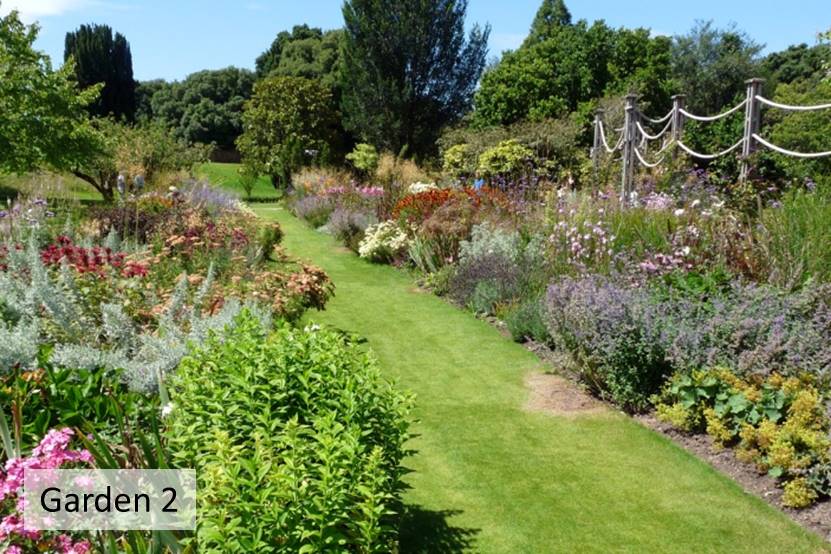
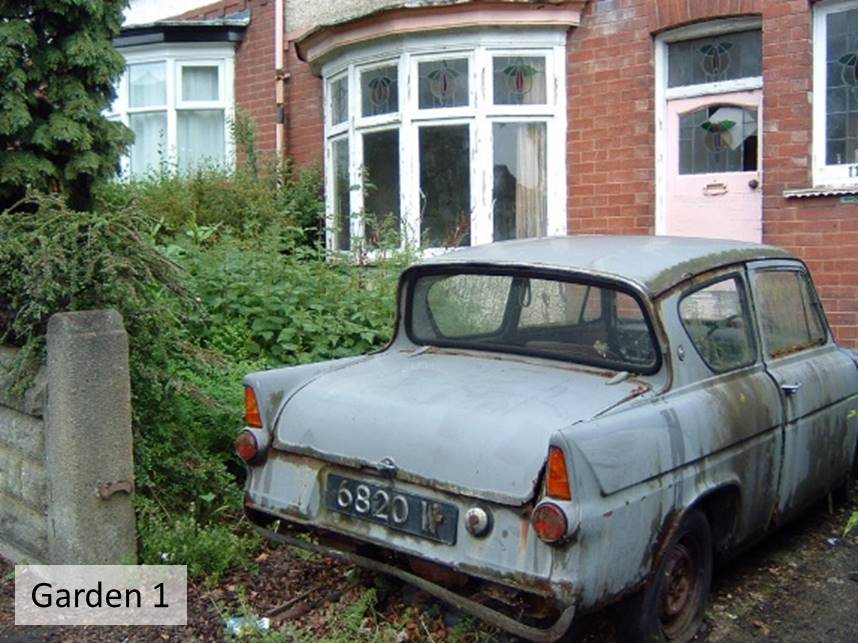
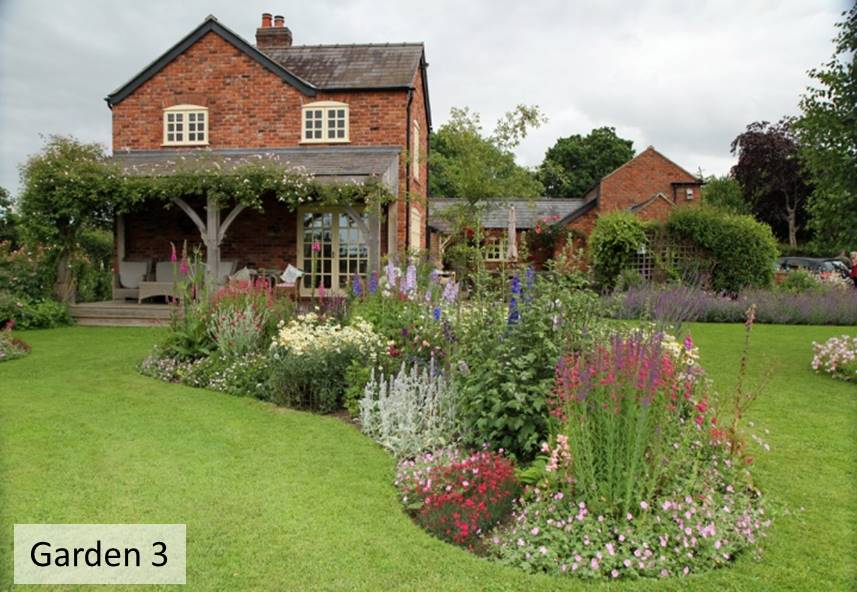
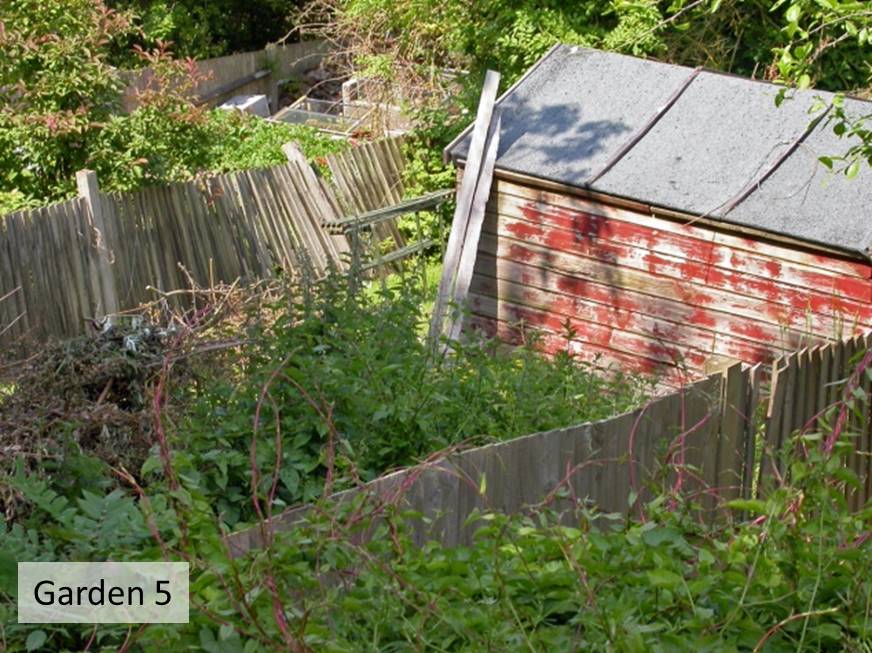
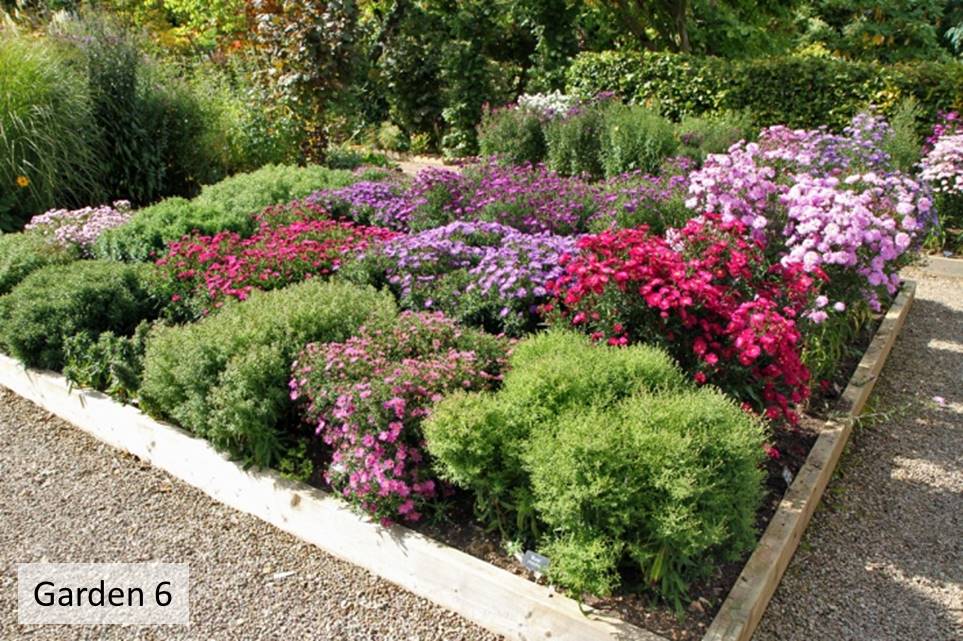
We suggest, based on the dictionary definitions, that a tidy garden might have several or all of these features:
• plants that are neatly arranged
• shrubs that have been clipped and pruned
• a lawn that is neatly edged and has uniform sections in height
• conveys a sense of being designed
• everything seems to be in its place, with no objects just left lying around
• garden structures appear to be in good condition, such as fences not leaning or broken, garden buildings and
paths well maintained
• an apparent lack of 'weeds'
• good plant health
• has straight or regularly curved lines and/or symmetry to garden features such as ponds, paths and borders.
From this list we suggest gardens 2, 3 and 6 would be high on the tidy scale.
In contrast, an ‘untidy garden’ is likely to be:
• one which appears to have been abandoned or left untended and unkempt
• where plants have become overgrown, rank or disorderly
• where many of the plants are recognised as ‘weeds’
• where objects are left lying around
• where there is little sense of clear design
• where garden structures are looking battered, broken and tired
• which has an air of scruffiness.
Gardens 1, 4 and 5 would seem to fit these descriptions well.
We’ve excluded from the definition features such as seedheads left on plants, which can look very attractive in some situations or in some types of plants, but in others can look scruffy. We have also excluded dead plant material on the ground - which sounds like it should look messy but in the case of mulches can increase the sense of tidiness.
So, if these definitions are correct, does the tidiness of a garden automatically reduce the biodiversity of a garden? In a study called “What determines how we see nature? Perceptions of naturalness in designed urban green spaces”2, the results showed that people think that a less tidy garden has more biodiversity (and vice versa), but is this actually the case?
One key piece of evidence that we have is the seminal work by Jennifer Owen, ‘Wildlife of a garden. A Thirty-year Study’. In it, she details the 2,673 species of plants and animals she recorded in her suburban Leicester garden during 1972–2001. Clearly her garden was very biodiverse, yet she describes her garden as “neat, attractive and productive”, indeed she wanted it to be representative of typical private gardens.
During the Biodiversity in Urban Gardens in Sheffield (BUGS) study3,4, a ‘management intensity’ index was devised to gives an approximate measure for tidiness. The owners of 61 gardens were asked to rate themselves according to their intensity of weeding, pruning, watering, dead-heading, collecting fallen leaves in autumn, use of fertiliser, use of herbicides and use of pesticides. Whilst not covering all of the areas in our definition of a tidy garden, we can assume that someone who intensively weeds, prunes, dead-heads and collects up leaves is likely to have what we might think of as a tidy garden.
When analysis was done with 22 groups of invertebrates, BUGS found no consistent relationship, either positive or negative, between wildlife and their index of management intensity.
For further evidence of the impact of tidiness of gardens, an informal study began in 2015 in a garden in West Sussex5. At the start, the garden met all of the above definitions for being ‘untidy’ (part of this is shown in Garden 4), but the gardener’s aim is to create a much more attractive and tidy garden while also improving its wildlife-friendliness. By 2019, after five full seasons of gardening, populations of almost all the intensely studied groups of wildlife (birds, butterflies, reptiles, bats, dragonflies, damselflies and stag beetles) had increased markedly. One exception was the common frog whose numbers had increased and then fallen, quite possibly due to predation from an increasing population of grass snakes.
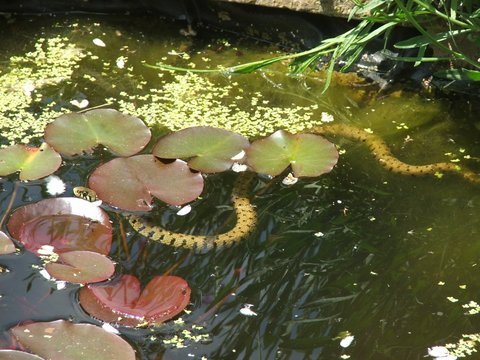
Changing your garden will affect different species in different ways. Adding or improving a pond will encourage frogs to breed, but if you are lucky (unlucky for the frogs) grass snakes may also adopt the garden and increase in numbers.
Tidiness and garden ecology
Theoretically, what are likely to be the ecological implications of various aspects of tidiness in gardens?
There are some aspects of tidiness for which it is hard to see why there would be an ecological impact, such as:
• there is no obvious reason why plants that are neatly arranged should be any worse for wildlife than the same
plants randomly arranged
• likewise, logs or other habitat features that are arranged in neat rows should have no less value for wildlife
than those thrown together randomly - or even better by making tighter gaps for concealment.
• whether or not a garden has an apparent strong visual design should not in itself impact on wildlife; wildlife is
generally unconcerned by straight lines or symmetry.
• a garden without 'weeds' is unlikely to adversely affect wildlife if the space the weeds would have occupied is
filled with wildlife-friendly plants.
• mowing neat edges around or through areas of lawn left to grow long not only neatens the ‘meadow’ area but
it might actually be more beneficial for wildlife than just having only long or short grass because it creates
more habitat diversity. Some species such as starlings and blackbirds are far more likely to use short grass,
and the interface between the long and short grass is an ecological ecotone ‘edge effect’ in miniature
However, there are ways in which 'tidiness' is likely to have a damaging effect on wildlife. For example:
• if raked-up leaves aren’t put in a leaf cage but are thrown away with the rubbish
• if prunings and dead wood aren’t stacked neatly but are burnt or thrown away
• if seedheads aren’t left in winter but are cut and cleared
• if ‘weeds’ and ‘pests’ are killed with herbicides, insecticides, flame-guns etc
• if neatness is achieved using hard landscaping and/or artificial grass
• if trees and bushes are pruned in the breeding season
• if the act of tidying reduces the volume of plant material, a reduction in plant diversity, the removal of a
habitat, or the removal of spatial diversity (and hence nesting places and shelter).
Note that the aspects of ‘tidiness’ in this list of damaging activities involve wholesale removal of important resources for wildlife or the direct eradication of certain garden creatures, rather than just matters of visual presentation.
"Letting it go"
What are the likely ecological impacts of ceasing to manage a garden and letting it become overgrown? It is possible that it may produce a higher biomass of living plant material, but there is no guarantee that it would develop higher biodiversity. In fact, during this process of succession certain vigourous plant species (such as bramble, nettle, bindweed, elder etc) would come to dominate. Eventually you would end up with scrubby woodland. Woodland, of course, has value for wildlife, but would mean definitely lower plant diversity compared to that contrived in a well-managed garden with its habitat mosaics, and hence probably reducing the overall animal diversity too. One of the reasons why gardens are so biodiverse is because gardeners instinctively hold back natural succession processes.
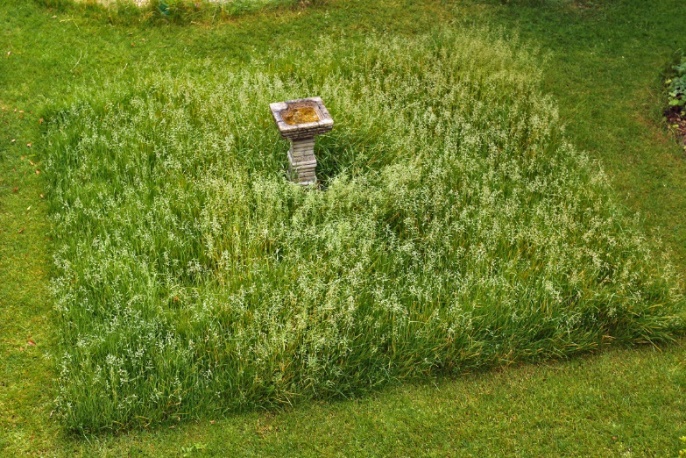
Area of long grass with neat mown edges to keep it looking tidy and cared-for.
Left: Garden unmanaged for about 15 years, dominated by Eucalyptus, ash and tree-of-heaven.
Below: Very neglected garden completely dominated by bramble.
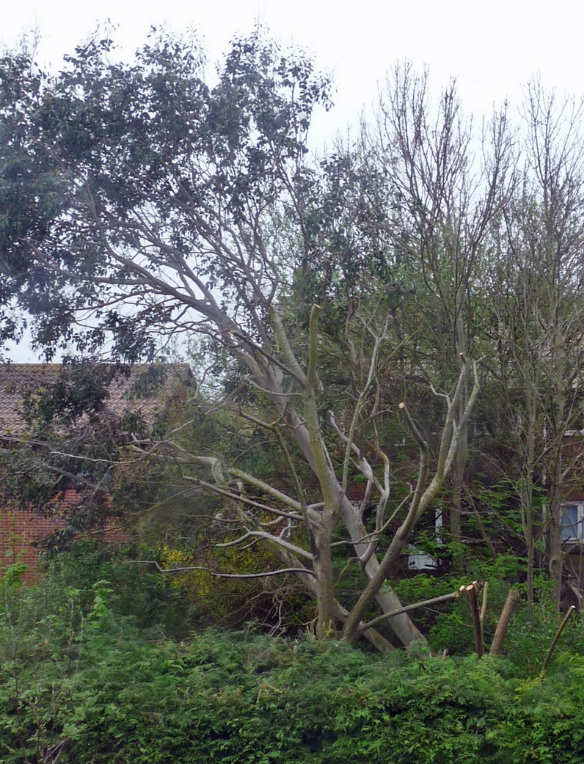
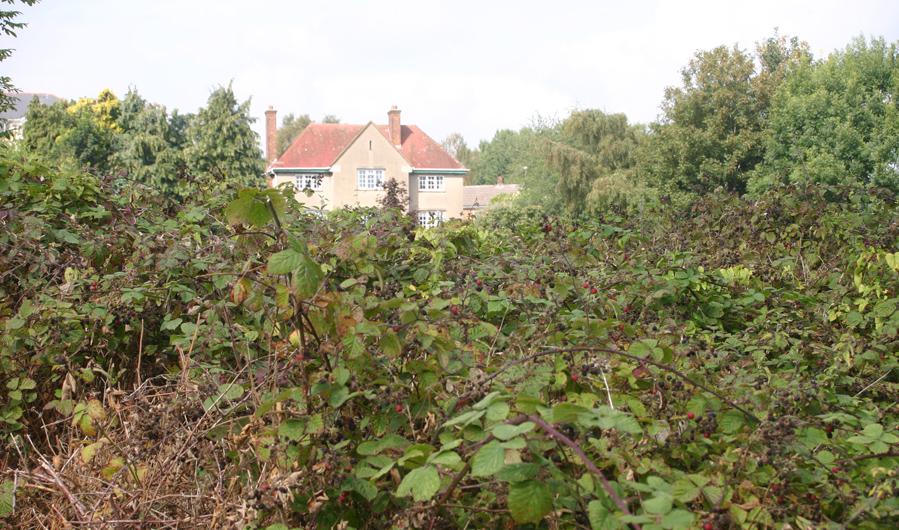
Conclusion
There is no reason why it is not possible to achieve a neat and orderly garden that is also wildlife-friendly. It is also possible for a scruffy garden to be poorer (in general) for wildlife than one which is well managed and tidy.
Therefore, the level of 'tidiness' or 'untidiness' of a garden is not a good indication of how biodiverse it is, unless the tidiness is so extreme that involves direct destruction of wildlife resources or of wildlife itself; in other words where ‘tidiness’ is actually more about ‘sterilisation’.
Far more important in determining wildlife-friendliness is how many and what plants are grown and what habitats are created, no matter the visual effect.
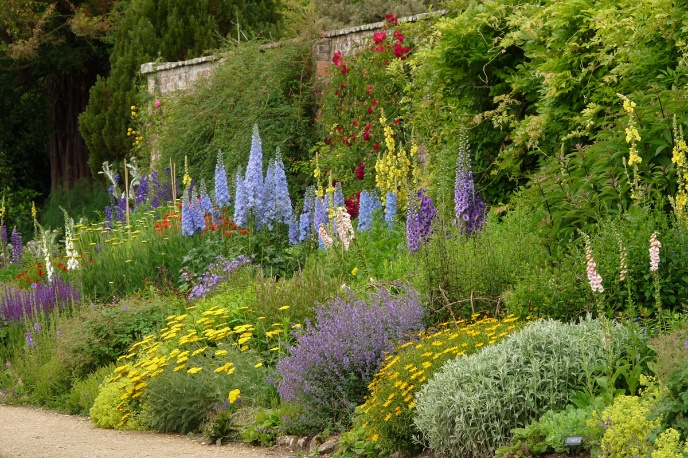
Neat, well-tended, but probably biodiverse herbaceous border at Waterperry Gardens near Oxford
We would greatly welcome research that further tests the ideas in this article. Nevertheless, as champions of wildlife gardening, we think the evidence is clear enough that we need to recognise the biodiversity value that can be achieved in a tidy garden and help those many people who love ‘neat and tidy’ gardens recognise that they can still have a real value in helping wildlife.
We need to help gardeners understand when tidiness slips into sterilisation, but we also need to help people recognise and acknowledge wildlife value when it is achieved in a tidy and beautiful garden.
References
1. Goddard, M.A., J.Dougill, A.J. and G.Benton, T.G. (2013) Why garden for wildlife? Social and ecological drivers, motivations and barriers for biodiversity management in residential landscapes. Ecological Economics 86:258-273 https://doi.org/10.1016/
2. Hoyle.H, Jorgensen,A, Hitchmough.JD (2019). What determines how we see nature? Perceptions of naturalness in designed urban green spaces. People and Nature. 1:167–180. DOI: 10.1002/pan3.19
3. Smith, R.M., Warren, P.H., Thompson, K. & Gaston, K.J. 2006. Urban domestic gardens (VI): environmental correlates of invertebrate species richness. Biodiversity and Conservation 15, 2415-2438. doi.org/10.1007/s10531-004-5014-0
4. Smith R.M., Gaston K.J., Warren P.H. & Thompson, K. 2006. Urban domestic gardens (VIII): environmental correlates of invertebrate abundance. Biodiversity and Conservation 15:2515-2545
5. Thomas, A. Study in progress.
Page written by Adrian Thomas, reviewed and compiled by Steve Head
Tidiness - are messy gardens better for wildlife?
There appears to be an abiding public perception that an untidy garden is better for wildlife than a tidy one. Articles appear frequently in the press with titles such as “Messy gardens are a bee's best friend”, “Why untidy gardens make the best habitat for wildlife” and “Why it’s time to make a mess of your garden”.
In their paper on what motivates people to garden for wildllife, Mark Goddard and his colleagues1 wrote, “Currently, the preference for tidy gardens acts as a considerable barrier to wildlife-friendly gardening”. Although no evidence is given, the implication is clear: if you want a wildlife-friendly garden, it cannot be tidy.
For people who would like an excuse to let their garden ‘run wild’, this is great news, but to those who prefer a more orderly garden it says that wildlife-friendly gardening is incompatible with their approach.
So, is it true? Is there science to back up the notion that "tidiness = poor(er) for wildlife’?
What is a tidy garden?
The first thing to clarify is what is meant by a ‘tidy garden’ or ‘untidy garden’. The definition of ‘tidy’ and ‘untidy’ is as follows:
•tidy (adjective): neat, orderly, methodically arranged (Oxford Concise Dictionary)
•untidy (adjective): not neat; slovenly (New Collins Concise English Dictionary).
How this translates to a garden is open to interpretation. Consider these six photos. How relatively tidy or untidy would you rate these gardens?



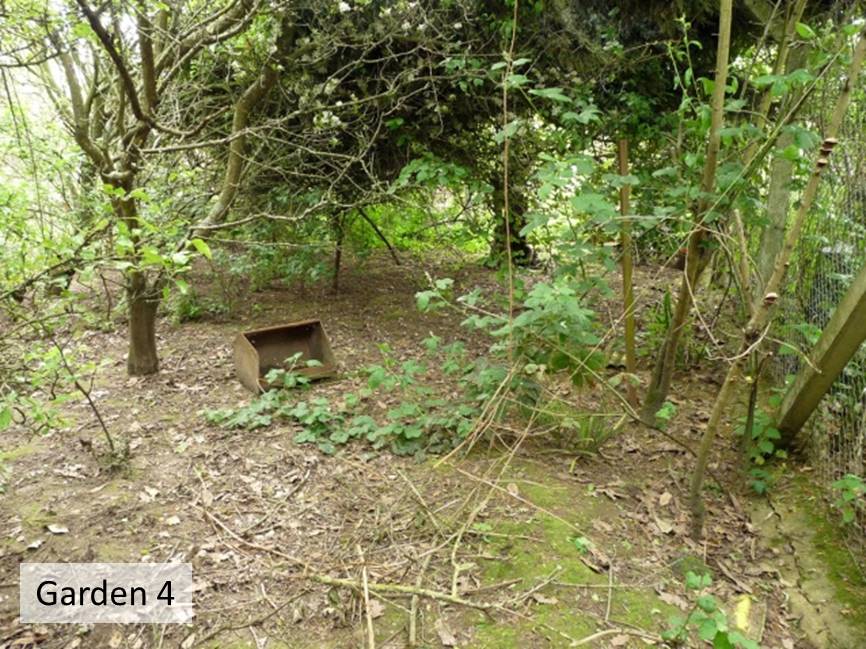


We suggest, based on the dictionary definitions, that a tidy garden might have several or all of these features:
• plants that are neatly arranged
• shrubs that have been clipped and pruned
• a lawn that is neatly edged and has uniform sections in height
• conveys a sense of being designed
• everything seems to be in its place, with no objects just left lying around
• garden structures appear to be in good condition, such as fences not leaning or broken, garden buildings and paths well maintained
• an apparent lack of 'weeds'
• good plant health
• has straight or regularly curved lines and/or symmetry to garden features such as ponds, paths and borders.
From this list we suggest gardens 2, 3 and 6 would be high on the tidy scale.
In contrast, an ‘untidy garden’ is likely to be:
• one which appears to have been abandoned or left untended and unkempt
• where plants have become overgrown, rank or disorderly
• where many of the plants are recognised as ‘weeds’
• where objects are left lying around
• where there is little sense of clear design
• where garden structures are looking battered, broken and tired
• which has an air of scruffiness.
Gardens 1, 4 and 5 would seem to fit these descriptions well.
We’ve excluded from the definition features such as seedheads left on plants, which can look very attractive in some situations or in some types of plants, but in others can look scruffy. We have also excluded dead plant material on the ground - which sounds like it should look messy but in the case of mulches can increase the sense of tidiness.
So, if these definitions are correct, does the tidiness of a garden automatically reduce the biodiversity of a garden? In a study called “What determines how we see nature? Perceptions of naturalness in designed urban green spaces”2, the results showed that people think that a less tidy garden has more biodiversity (and vice versa), but is this actually the case?
One key piece of evidence that we have is the seminal work by Jennifer Owen, ‘Wildlife of a garden. A Thirty-year Study’. In it, she details the 2,673 species of plants and animals she recorded in her suburban Leicester garden during 1972–2001. Clearly her garden was very biodiverse, yet she describes her garden as “neat, attractive and productive”, indeed she wanted it to be representative of typical private gardens.
During the Biodiversity in Urban Gardens in Sheffield (BUGS) study3,4, a ‘management intensity’ index was devised to gives an approximate measure for tidiness. The owners of 61 gardens were asked to rate themselves according to their intensity of weeding, pruning, watering, dead-heading, collecting fallen leaves in autumn, use of fertiliser, use of herbicides and use of pesticides. Whilst not covering all of the areas in our definition of a tidy garden, we can assume that someone who intensively weeds, prunes, dead-heads and collects up leaves is likely to have what we might think of as a tidy garden.
When analysis was done with 22 groups of invertebrates, BUGS found no consistent relationship, either positive or negative, between wildlife and their index of management intensity.
For further evidence of the impact of tidiness of gardens, an informal study began in 2015 in a garden in West Sussex5. At the start, the garden met all of the above definitions for being ‘untidy’ (part of this is shown in Garden 4), but the gardener’s aim is to create a much more attractive and tidy garden while also improving its wildlife-friendliness. By 2019, after five full seasons of gardening, populations of almost all the intensely studied groups of wildlife (birds, butterflies, reptiles, bats, dragonflies, damselflies and stag beetles) had increased markedly. One exception was the common frog whose numbers had increased and then fallen, quite possibly due to predation from an increasing population of grass snakes.
Changing your garden will affect different species in different ways. Adding or improving a pond will encourage frogs to breed, but if you are lucky (unlucky for the frogs) grass snakes may also adopt the garden and increase in numbers.

Tidiness and garden ecology
Theoretically, what are likely to be the ecological implications of various aspects of tidiness in gardens?
There are some aspects of tidiness for which it is hard to see why there would be an ecological impact, such as:
• there is no obvious reason why plants that are neatly arranged should be any worse for wildlife than the same plants randomly arranged
• likewise, logs or other habitat features that are arranged in neat rows should have no less value for wildlife than those thrown together randomly - or even better by making tighter gaps for concealment.
• whether or not a garden has an apparent strong visual design should not in itself impact on wildlife; wildlife is generally unconcerned by straight lines or symmetry.
• a garden without 'weeds' is unlikely to adversely affect wildlife if the space the weeds would have occupied is filled with wildlife-friendly plants.
• mowing neat edges around or through areas of lawn left to grow long not only neatens the ‘meadow’ area but it might actually be more beneficial for wildlife than just having only long or short grass because it creates more habitat diversity. Some species such as starlings and blackbirds are far more likely to use short grass, and the interface between the long and short grass is an ecological ecotone ‘edge effect’ in miniature.

Area of long grass with neat mown edges to keep it looking tidy and cared-for.
However, there are ways in which 'tidiness' is likely to have a damaging effect on wildlife. For example:
• if raked-up leaves aren’t put in a leaf cage but are thrown away with the rubbish
• if prunings and dead wood aren’t stacked neatly but are burnt or thrown away
• if seedheads aren’t left in winter but are cut and cleared
• if ‘weeds’ and ‘pests’ are killed with herbicides, insecticides, flame-guns etc
• if neatness is achieved using hard landscaping and/or artificial grass
• if trees and bushes are pruned in the breeding season
• if the act of tidying reduces the volume of plant material, a reduction in plant diversity, the removal of a habitat, or the removal of spatial diversity (and hence nesting places and shelter).
Note that the aspects of ‘tidiness’ in this list of damaging activities involve wholesale removal of important resources for wildlife or the direct eradication of certain garden creatures, rather than just matters of visual presentation.
"Letting it go"
What are the likely ecological impacts of ceasing to manage a garden and letting it become overgrown? It is possible that it may produce a higher biomass of living plant material, but there is no guarantee that it would develop higher biodiversity. In fact, during this process of succession certain vigourous plant species (such as bramble, nettle, bindweed, elder etc) would come to dominate. Eventually you would end up with scrubby woodland. Woodland, of course, has value for wildlife, but would mean definitely lower plant diversity compared to that contrived in a well-managed garden with its habitat mosaics, and hence probably reducing the overall animal diversity too. One of the reasons why gardens are so biodiverse is because gardeners instinctively hold back natural succession processes.


Conclusion
There is no reason why it is not possible to achieve a neat and orderly garden that is also wildlife-friendly. It is also possible for a scruffy garden to be poorer (in general) for wildlife than one which is well managed and tidy.
Therefore, the level of 'tidiness' or 'untidiness' of a garden is not a good indication of how biodiverse it is, unless the tidiness is so extreme that involves direct destruction of wildlife resources or of wildlife itself; in other words where ‘tidiness’ is actually more about ‘sterilisation’.
Far more important in determining wildlife-friendliness is how many and what plants are grown and what habitats are created, no matter the visual effect.

Neat, well-tended, but probably biodiverse herbaceous border at Waterperry Gardens near Oxford
Left: Garden unmanaged for about 15 years, dominated by Eucalyptus, ash and tree-of-heaven.
Below: Very neglected garden completely dominated by bramble.

We would greatly welcome research that further tests the ideas in this article. Nevertheless, as champions of wildlife gardening, we think the evidence is clear enough that we need to recognise the biodiversity value that can be achieved in a tidy garden and help those many people who love ‘neat and tidy’ gardens recognise that they can still have a real value in helping wildlife.
We need to help gardeners understand when tidiness slips into sterilisation, but we also need to help people recognise and acknowledge wildlife value when it is achieved in a tidy and beautiful garden.
References
1. Goddard, M.A., J.Dougill, A.J. and G.Benton, T.G. (2013) Why garden for wildlife? Social and ecological drivers, motivations and barriers for biodiversity management in residential landscapes. Ecological Economics 86:258-273 https://doi.org/10.1016/
2. Hoyle.H, Jorgensen,A, Hitchmough.JD (2019). What determines how we see nature? Perceptions of naturalness in designed urban green spaces. People and Nature. 1:167–180. DOI: 10.1002/pan3.19
3. Smith, R.M., Warren, P.H., Thompson, K. & Gaston, K.J. 2006. Urban domestic gardens (VI): environmental correlates of invertebrate species richness. Biodiversity and Conservation 15, 2415-2438. doi.org/10.1007/s10531-004-5014-0
4. Smith R.M., Gaston K.J., Warren P.H. & Thompson, K. 2006. Urban domestic gardens (VIII): environmental correlates of invertebrate abundance. Biodiversity and Conservation 15:2515-2545
5. Thomas, A. Study in progress.
Page written by Adrian Thomas, reviewed and compiled by Steve Head











